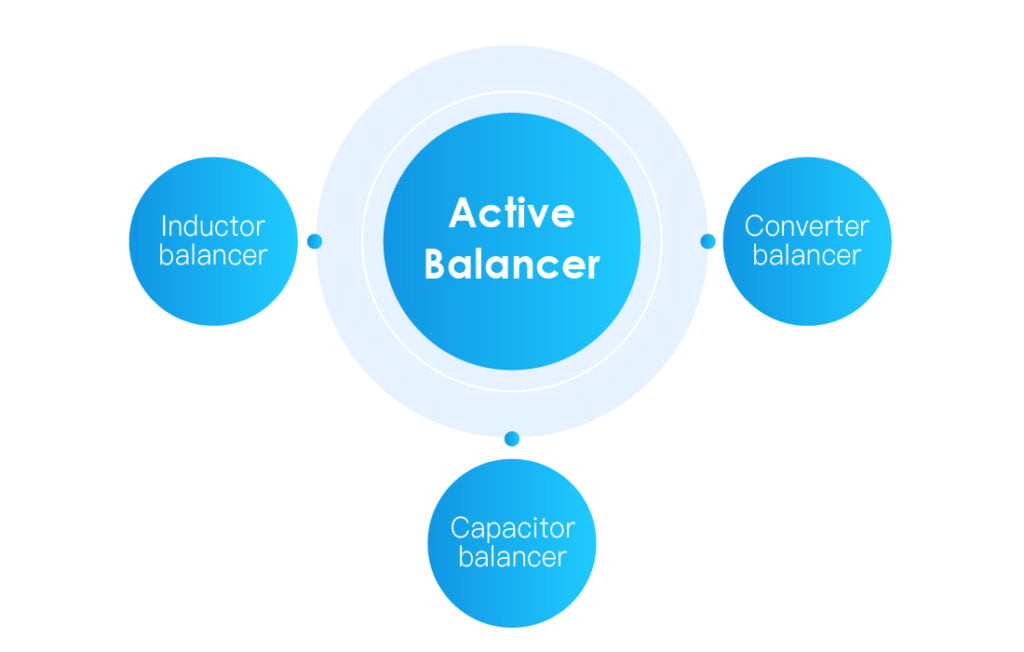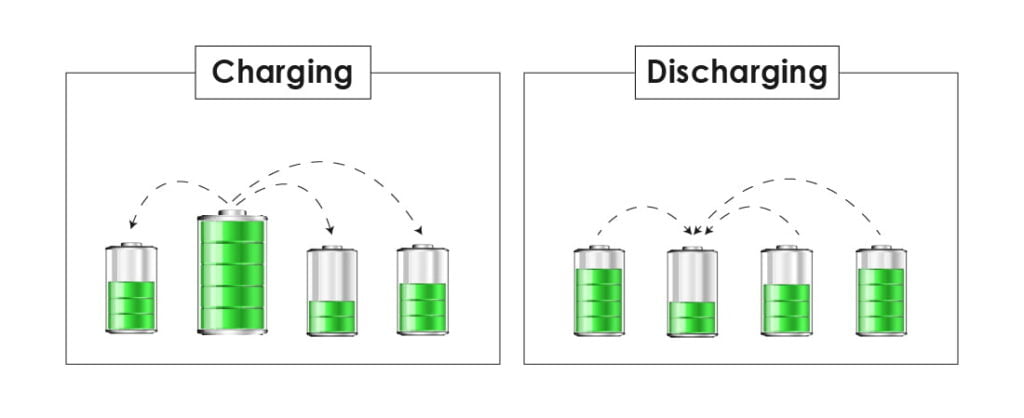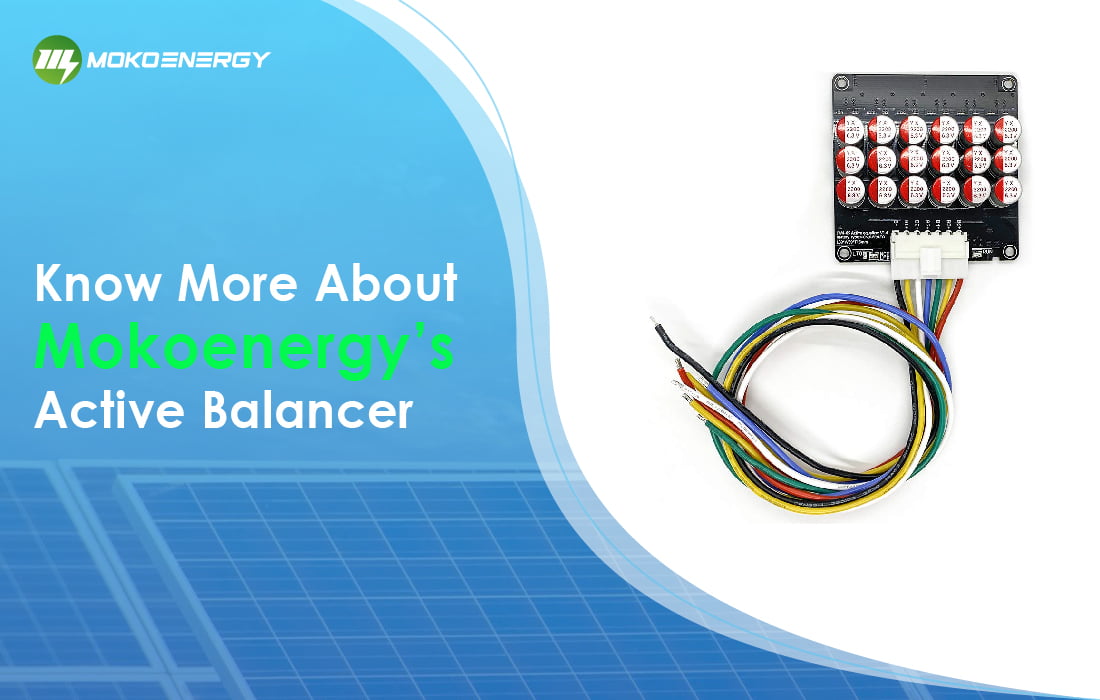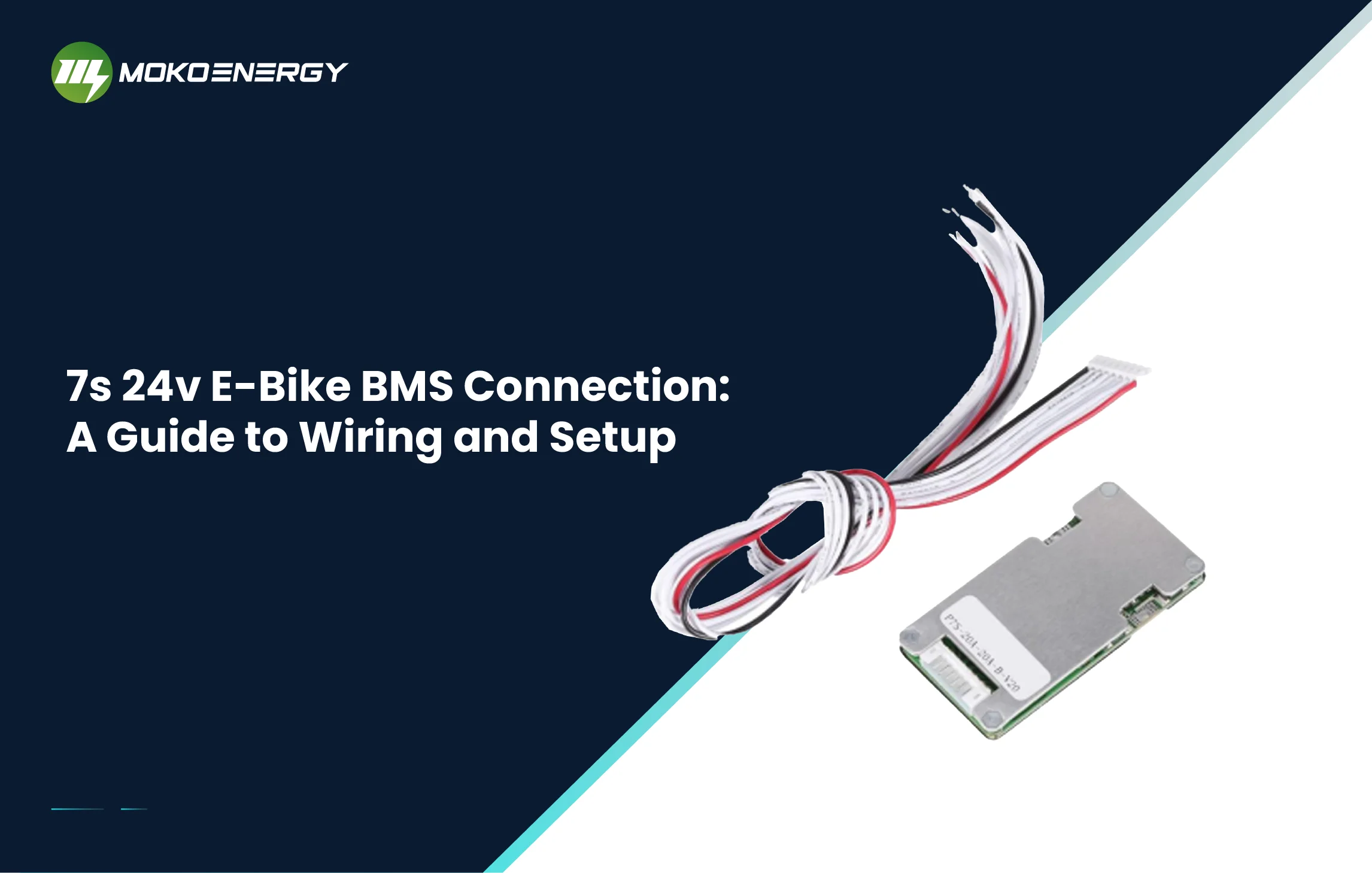A component with a very significant role to play in BMS, the battery balancer is responsible for making sure that individual cells remain in the same state of charge (SOC). There are mainly two types of balancers namely active balancer and passive balancer. In this blog, we are about to introduce you the former one: active balancer. So, what is it? How does it operate? What are its benefits? Look up our blog, and search for more answers.
What Exactly Is Active Balancer?
Battery cells may charge and discharge at different levels. The active balancer is activated whenever the charges differ across cells, transferring the energy from higher-voltage cells to lower-charge cells. Then, all cells are equalized, improving the efficiency of the battery.
The charge equalization is generally based on three main types of active balancers: inductor-based, capacitor-based, and converter-based.
- Inductor balancer: It stores energy from higher-voltage cells by magnetic elements such as inductors or transformers before transferring unbalanced energies among
- Capacitor balancer: Perform as an energy storage device, the capacitor balancer connects higher voltage cells and transfers energy down to lower voltage cells, so as to balance the SOC.
- Converter balancer: Various sorts of power converters are employed by the system to redistribute energy, thereby balancing the SOC across all cells.

How Does an Active Balancer Work?
If several cells are connected together to form a battery, the capacity and other parameters of cells are always different due to their age. Those cells with lower capacity will always charge and discharge faster than other cells, limiting the total charge amount and rendering damage to the battery.
The management system will monitor the SOC of each cell during both charging and discharging. When charging, the active balancer will redistribute cells that have fully charged to other cells until all of them are fully charged. When discharging, in case of over-discharging, the balancer will equalize those normal cells to weak cells.
For example, if there are three cells in a battery pack, a cell reaches the full capacity of 4.2v faster than other cells of 3v. Then, the active balancer will transfer its charge through capacitors or inductors to other unfilled cells, keeping a balance of 3.4v between cells.

What Does an Active Balancer Benefit?
Next is a recommendation about the advantages of the active balancer.
- Performance improvement: Enhance performance and the durability of the battery by balancing cells.
- Safety: Safeguard cells from overcharging or dis-overcharging which may cause fire; reduce the heat caused during balancing.
- Life expectancy extension: Extend the battery expectancy by reducing the stress of individual weak cells, preventing aging and failure.
- Higher efficiency: Balance the cells in a shorter time with higher efficiency.
- No charge wasting: Redistribute the energy rather than dissipate it like the passive balancer.
- Operate both in charging and discharging: the balancer can work during both charging and discharging.
After reviewing the above benefits, we can see that the active balancer has a distinctive impact on the battery.
Conclusion
Active balancer exerts essential influence in the BMS through balancing the SOC between cells, expanding battery life and improving its performance. As a reliable partner for energy storage, Mokoenergy has fully mastered BMS technologies, offering advanced balancing solutions and sound services for our customers. So please keep in touch with us if you have any needs or questions.






